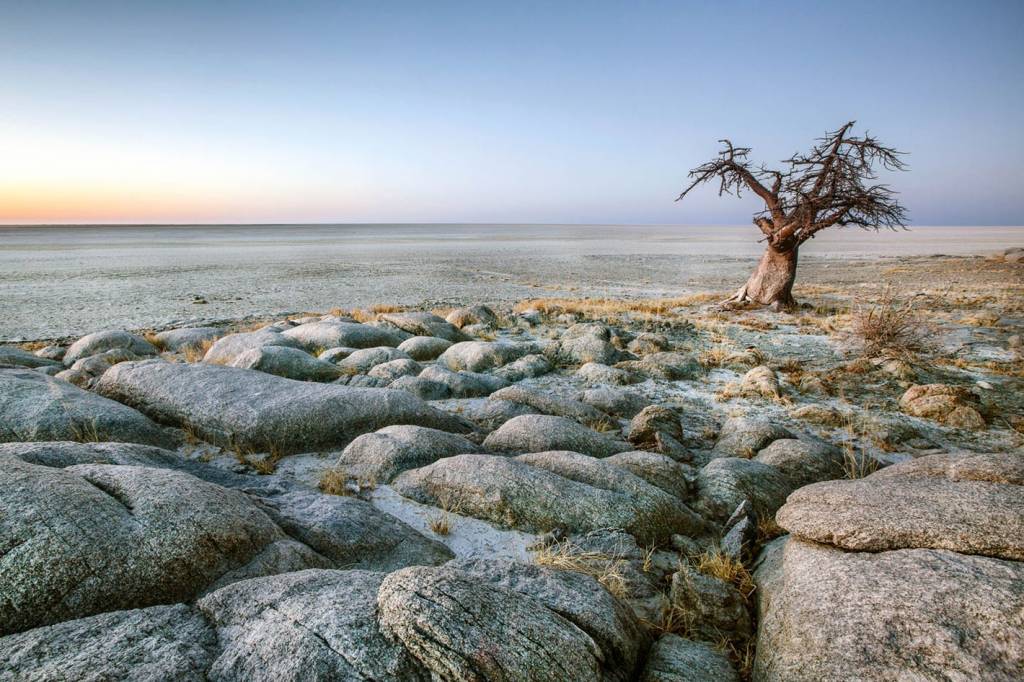The Makgadikgadi Pans are one of Botswana’s most extraordinary destinations. Stretching over 16,000km2, they form a network of inter-connected saltpans which are all that’s left of a huge inland lake that covered the centre of Botswana many thousands of years ago. The two largest pans are Sua Pan on the east and Ntwetwe Pan to the west. During winter, when the pans are dry, you can drive across them from Orapa to Gweta, stopping on the way for a memorable night at the magical baobab forest on Lekhubu Island.

Landscape tree in the Makgadikgadi
Highlights
Lekhubu Island is an absolute must, a baobab-studded marvel on the western edge of Sua Pan. There’s a small campsite there and not much else, just stars and trees and the vast horizon. As you drive north, the boundless views continue, especially on the desolate track that heads northwest to Gweta. This route crosses Ntwetwe Pan and is not possible during summer, but from June to November conditions should be manageable. When the track is dry, it cuts directly across Ntwetwe’s immense expanse, with the unbroken horizon in every direction.
Practical advice
Never try to cross the pans when wet and don’t drive off the main tracks unless you’re sure they’re bone dry. It’s best not to take chances – even seemingly dry surfaces can hide thick mud underneath. In winter, however, conditions are not too difficult and the Orapa to Lekhubu section only takes a couple of hours. On the Orapa side, the tracks through the initial scrubland are confusing and south of Gweta it’s much the same. Multiple, dusty tracks head in more-or-less the same direction and navigation can be very tricky without a GPS. You can drive from Lekhubu to Gweta in about four hours, but give yourself a couple more for stops along the way. Most travelers opt for 4×4 hire when planning a trip to Botswana.
 Rating: 4 - 1562 Reviews
Rating: 4 - 1562 Reviews









